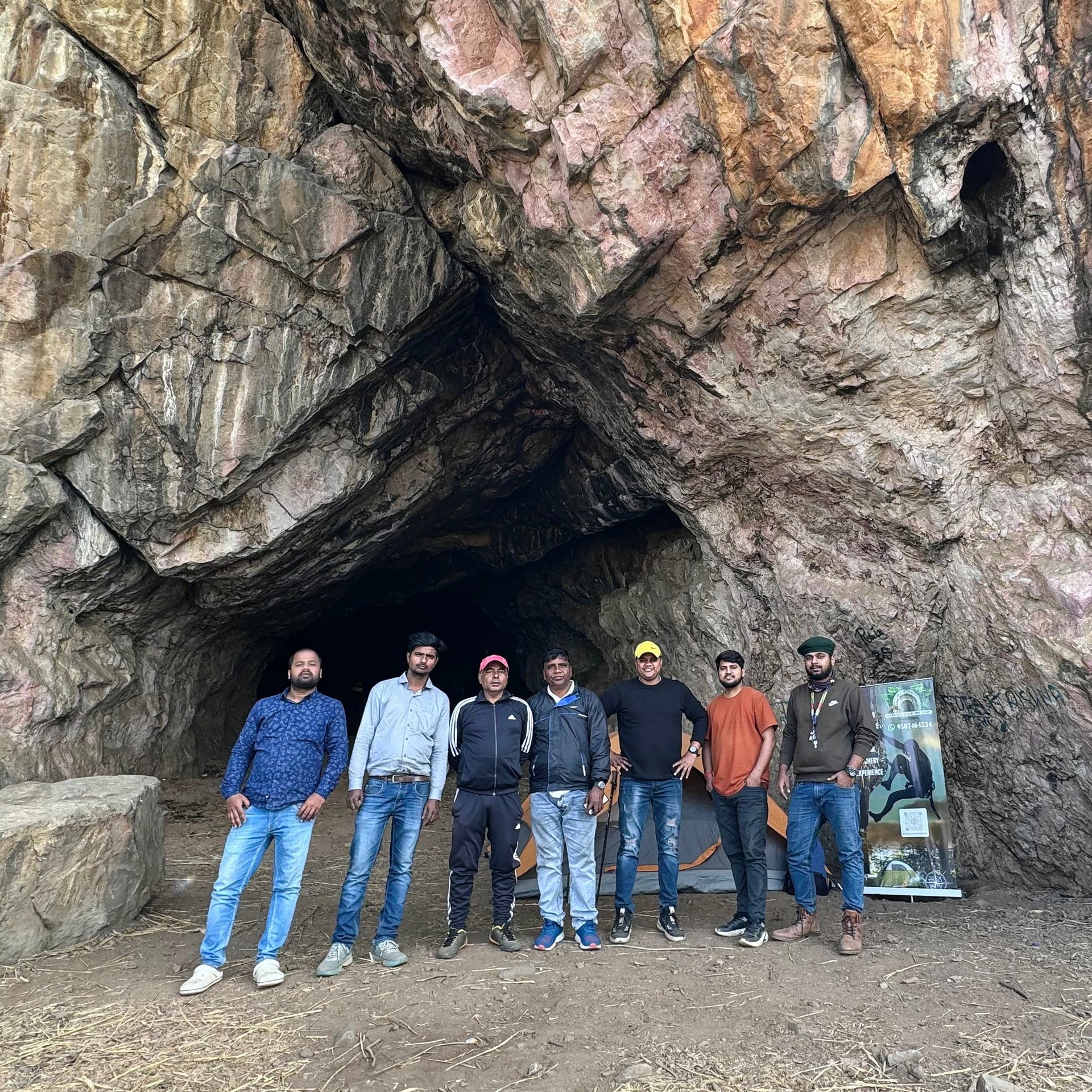
The Asura Cave (Raja Pinda Cave), Jethian Valley: A Hidden Buddhist Heritage
When Buddha and his 1,000 monks visited Rajgir for the first time, they stayed at the Asura Cave. It was here that King Bimbisara met Buddha, listened to his teachings, and eventually became a devoted follower.
LAND MARKSUSTAINABLE TOURISMADVENTURE TOURISMNATURE STAYDESTINATIONRESPONSIBLE TOURISMECO TOURISM
BAECB HILL'S


The Asura Cave : A Hidden Heritage
Tucked away in the serene Jethian Valley of Gaya, Bihar, the Asura Cave, also known as Raja Pinda Cave, stands as a silent witness to a significant chapter in Buddhist history. This ancient site is believed to be the very place where King Bimbisara first met Gautama Buddha, marking the beginning of a profound patronage that played a crucial role in the spread of Buddhism. The cave, surrounded by lush hills and spiritual tranquility, offers an intriguing glimpse into the past, making it a must-visit for history enthusiasts and Buddhist pilgrims alike.
Historical and Buddhist Significance
The Meeting of Buddha and King Bimbisara
According to Buddhist scriptures and historical texts, King Bimbisara, the ruler of the Magadha empire, was deeply fascinated by the teachings of Buddha. When Buddha and his 1,000 monks visited Rajgir for the first time, they stayed at the Asura Cave. It was here that King Bimbisara met Buddha, listened to his teachings, and eventually became a devoted follower. This encounter is a landmark moment in Buddhist history, as Bimbisara later played a key role in supporting the establishment of Buddhism.
Mention in Xuanzang’s Records
The cave’s significance is further reinforced by the accounts of the famous Chinese traveler and Buddhist monk, Xuanzang (Hsuan Tsang), who visited India in the 7th century CE. In his travelogues, he describes the Asura Cave as a place associated with Buddha’s stay and the early spread of Buddhism in the region. His writings provide valuable historical evidence of the cave’s importance as a sacred site.
Possible Jain and Pre-Buddhist Connections
Some historians believe that the cave might have had religious significance even before Buddhism, possibly as a meditation retreat for Jain monks or other ascetic traditions. The name "Asura Cave" suggests links to local myths, possibly referring to ancient tribes or spiritual beings believed to have lived in these remote areas.
Current Status and Preservation Efforts
Despite its deep historical and religious importance, the Asura Cave (Raja Pinda Cave) remains relatively lesser known compared to popular Buddhist sites like Bodh Gaya and Rajgir. The site is still awaiting large-scale conservation and tourism development. However, awareness about its heritage is gradually increasing, with scholars and heritage enthusiasts advocating for better preservation and accessibility.
The cave, located amidst rugged hills, retains its untouched charm, offering visitors a sense of timelessness. Pilgrims and history lovers who make the journey to this site can experience a deep spiritual connection with the place where Buddha once walked.
How to Visit the Asura Cave in Jethian Valley
Location: Jethian Valley, Gaya District, Bihar, India
Nearest City: Rajgir (around 20 km away)
Best Time to Visit: October to March (pleasant weather for exploration)
How to Reach:
By Air: The nearest airport is Gaya International Airport, about 50 km away.
By Train: The closest railway station is Rajgir Railway Station, well-connected to major cities.
By Road: The site can be reached via road from Rajgir or Gaya, with local transport or trekking options available.
Conclusion
The Asura Cave (Raja Pinda Cave) in Jethian Valley is more than just an archaeological site—it is a sacred space that witnessed the early interactions between Buddha and King Bimbisara, shaping the future of Buddhism. While the cave remains relatively unexplored by mainstream tourism, its historical depth makes it an essential destination for those seeking a deeper connection with Buddhist heritage and India’s ancient past.
As efforts to preserve and promote this site continue, the Asura Cave stands as a symbol of spiritual wisdom, waiting to be rediscovered by modern travelers. If you’re drawn to history, Buddhism, or offbeat exploration, a visit to this hidden gem in Bihar is well worth the journey.
Asura Caves jethiyan

Camping In Bihar
Experience thrilling camping at Barabar Hill Caves.
Discover | Engage | Inspire
+91 7050330761
